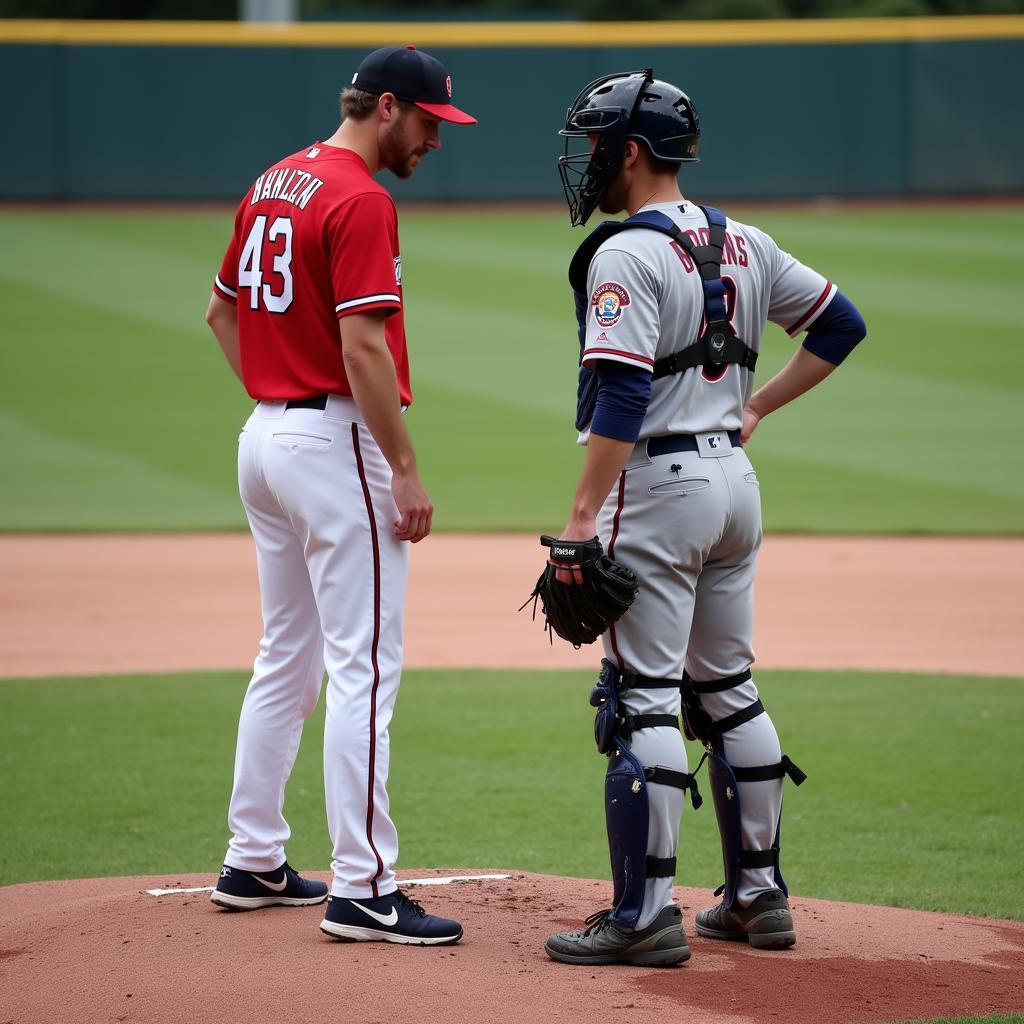Decoding the Payoff Pitch: What Makes it Tick in a Baseball Game
October 18, 2024The payoff pitch in baseball is a term that gets thrown around a lot, but what does it actually mean? In essence, it’s the moment of truth, the climax of the at-bat where the pitcher puts his best stuff on display and the batter has to dig deep to make a play. It’s a battle of wits, skill, and strategy, and understanding the dynamics of the payoff pitch can deepen your appreciation for the beautiful game of baseball.
The Stakes of the Payoff Pitch: More Than Just Strikes and Balls
Every pitch in baseball carries weight, but the payoff pitch elevates the tension to a whole new level. It’s the moment when the pitcher has to execute his best pitch, whether it’s a blistering fastball, a deceptive changeup, or a knee-buckling curveball. The batter, on the other hand, has to anticipate the pitch, read the spin, and decide whether to swing for the fences or hold back and hope for a walk.
 Baseball player at bat with a pitcher on the mound
Baseball player at bat with a pitcher on the mound
The Mind Games of the Payoff Pitch: It’s a Chess Match on the Diamond
The payoff pitch isn’t just about physical execution; it’s also about psychology. Pitchers often try to set up the payoff pitch earlier in the at-bat, working the corners, changing speeds, and keeping the batter guessing. They might throw a series of off-speed pitches to get the batter off balance and then surprise him with a fastball on the inside corner.
Batters, meanwhile, have to be students of the game, studying the pitcher’s tendencies, looking for tells in his delivery, and trying to anticipate what’s coming. They need to have a game plan, but they also need to be able to adjust on the fly and trust their instincts in the heat of the moment.
Factors Influencing the Payoff Pitch: The Game Within the Game
Several factors can influence the payoff pitch, turning it into a fascinating chess match between the pitcher and the batter:
- The Game Situation: Is it a tie game in the bottom of the ninth? Or a blowout in the early innings? The score, the inning, and the number of runners on base all play a role in determining the payoff pitch.
- The Pitcher’s Strengths: Does he have a devastating slider? A pinpoint fastball? The pitcher will often rely on his best pitch when the game is on the line.
- The Batter’s Weaknesses: Does the batter struggle against left-handed pitching? Is he prone to chasing breaking balls out of the strike zone? The pitcher will try to exploit these weaknesses.
 Pitcher and catcher having a meeting on the mound
Pitcher and catcher having a meeting on the mound
The Payoff Pitch: More Than Just a Single Moment
While we often talk about “the” payoff pitch, it’s important to remember that every at-bat can have multiple turning points. A pitcher might make a great pitch on 2-2, only to miss his spot on the next pitch and surrender a base hit. Similarly, a batter might foul off a few tough pitches, work the count full, and then draw a walk, turning a seemingly insignificant at-bat into a small victory.
The Beauty of the Payoff Pitch: Unpredictability and the Thrill of the Unknown
The beauty of the payoff pitch lies in its unpredictability. Will the pitcher rise to the occasion and deliver a strike? Or will the batter connect for a game-winning hit? It’s this element of uncertainty that keeps fans on the edge of their seats, creating a shared experience of anticipation and excitement. The next time you watch a baseball game, pay close attention to the payoff pitches. You’ll gain a deeper appreciation for the strategic nuances of this captivating sport.
FAQs about Payoff Pitches in Baseball
1. Is the payoff pitch always the last pitch of an at-bat?
Not necessarily. While it often is, a payoff pitch can happen earlier in the count, especially if the pitcher gets ahead early or the batter is looking to be aggressive.
2. What makes a good payoff pitch?
A good payoff pitch is one that the pitcher can locate consistently and that the batter has difficulty hitting. This could be due to the pitch’s velocity, movement, or the element of surprise.
3. Do pitchers and catchers have specific signs for payoff pitches?
Yes, often they do. They might use a different set of signs or a special indicator to communicate that a payoff pitch is coming.
4. Can you give an example of a famous payoff pitch in baseball history?
One famous example is Joe Carter’s walk-off home run off Mitch Williams in Game 6 of the 1993 World Series. Williams threw Carter a fastball on a 2-2 count, and Carter launched it into the left field stands to win the World Series for the Toronto Blue Jays.
5. How can I learn to identify payoff pitches when watching baseball?
Pay attention to the game situation, the count, and any patterns you notice in the pitcher’s approach. As you watch more baseball, you’ll develop a feel for when a payoff pitch is likely to be thrown.
For any assistance, please feel free to reach out to us at Phone Number: 0963418788, Email: [email protected] Or visit us at: 2M4H+PMH, Nghĩa Thành Ward, Gia Nghĩa, Đắk Nông, Vietnam. We have a 24/7 customer support team ready to help.